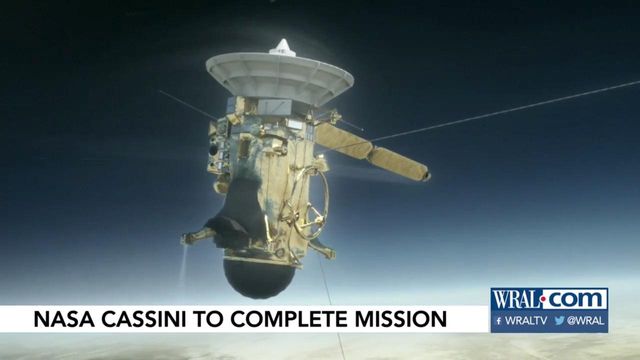After 20 years, NASA sends Cassini spacecraft into Saturn to be destroyed
The Cassini mission ends Friday, Sept. 15, 2017. After 13 years of exploring Saturn and its moons, the spacecraft will deliberately plunge at over 75,000 miles per hour into the planet and ultimately be destroyed by the weight and temperature of the atmosphere.
Posted — UpdatedThe Cassini spacecraft mission ends Friday, Sept. 15, 2017. After 13 years of exploring Saturn and its moons, the spacecraft will deliberately plunge at over 75,000 miles per hour into the planet and ultimately be destroyed by the weight and temperature of the atmosphere.
Along the way, Cassini revealed much about this best-known of the ringed planets (Jupiter, Uranus and Neptune each have rings as well).
When Cassini was launched in 1997, we knew of 18 Saturnian moons. During the nearly 7 year voyage to reach Saturn, another 13 were discovered. Today, 62 moons are known to orbit Saturn, including “Peggy,” a small, bright moon observed to form in Saturn’s rings in April 2013.
Cassini revealed Saturn’s icy ocean moon, Enceladus, as one of the places in the solar system outside Earth that is most likely to support microbial life. Cassini returned evidence of liquid water and complex organic compounds beneath a layer of ice. Hundreds of geysers vent water vapor from salt-water oceans beneath the planet's surface into space.
Cassini also discovered evidence of an ocean beneath the icy shell on Saturn’s largest moon, Titan. Tides driven by Saturn’s powerful gravity help stretch and deform this global, water-ammonia (similar to a window cleaner product on Earth) ocean. Despite the window-cleaner-like liquid which dominates the moon, Titan is the most Earth-like object in our solar system with weather systems that produce rain, which gathers into lakes.
Saturn’s atmosphere can become engulfed in planet-wide storm systems, too. The storms can disrupt the planet's climate for years to come.
Even during Cassini’s final moments, it will be beaming data back to Eart. Saturn’s atmosphere will be measured by the onboard mass spectrometer in real time for as long as the spacecraft survives.
The spacecraft was nudged into position by Titan's gravity on Monday for its Grand Finale. Cassini is expected to send its last data to Earth at 7:03 a.m. We’ll receive those signals sent at the speed of light, 52 minutes later.
Why crash a multibillion dollar spacecraft? While its radioisotope thermoelectric generator is still going strong, generating 633 watts, plenty for Cassini’s science and communications equipment, like the propellant tank, which fuels maneuvering engines, is down to less than 1 percent of its life. This disposal method ensures Enceladus and Titan remain pristine for future exploration.
Related Topics
• Credits
Copyright 2024 by Capitol Broadcasting Company. All rights reserved. This material may not be published, broadcast, rewritten or redistributed.





